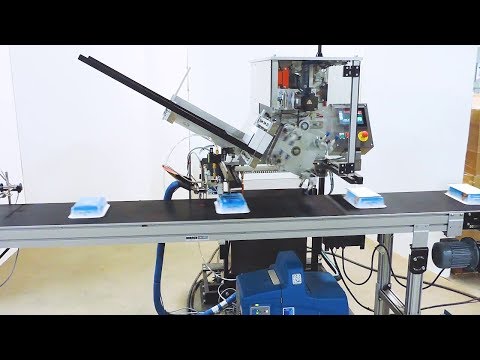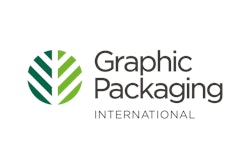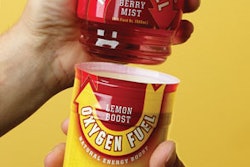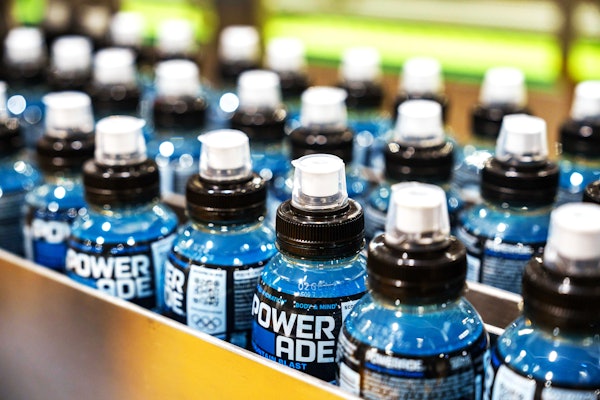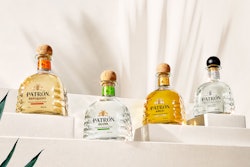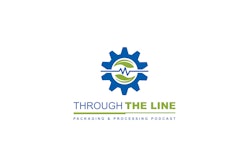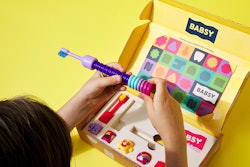Not long ago, smart packaging was the topic du jour. Product innovations made headlines daily, and new categories—intelligent, active, controlled, enhanced, and functional—entered the lexicon just as rapidly. “Smartwashing” was rampant. The industry was electrified by promises of new-age packaging that would propel brands to the top, through ingenuity, novelty, and added value.
Today that buzz has died down. Some speculate that it has been replaced by the deafening roar of sustainability; others suggest that enthusiasm for such innovation has been dampened by increased packaging costs and regulations. Or, has smart packaging proven to be just a bunch of blue-sky thinking?
According to Dr. Paul Butler, U.K.-based smart packaging consultant (www.smartpackaging.co.uk/) and co-editor of “Smart Packaging Technologies for Fast Moving Consumer Goods,” smart packaging is alive and well and is continuing—albeit slowly—to grow globally. “But it is still a niche area, as is all new packaging in the beginning,” he says. “The need to differentiate products on crowded supermarket shelves remains as high as ever, as is the need to find a better way to communicate the product use and attributes via packaging. For brands, differentiation and emotional engagement with the consumer are becoming increasingly essential properties of packaging—smart is one way of doing this.
“Also in Europe, there is a growing imperative to tackle the staggering amounts of food waste that is produced by both consumers and the supply chain. Smart packaging can help tackle the food-waste problem and improve consumer food safety at the same time.”
According to a technical report from BCC Research (www.bccresearch.com) published in January 2008, the global market for active, controlled, and intelligent packaging for the food and beverage industry is expected grow from $15.5 billion in 2005 to $16.9 billion by year’s end. By 2013, the report estimates, the market should reach $23.6 billion, for a compound annual growth rate of 6.9%.
In contrast, a study published in August 2007 by The Freedonia Group, Inc. (www.freedonia.com) projects that the demand for active and intelligent packaging will grow 13% annually from $615 million in 2006 to $2.1 billion in 2016.
The discrepancies between these two study results—both of which Butler says are probably “overly optimistic”—make clear the challenges presented in understanding and quantifying the smart-packaging market: Definitions of terminology vary widely, as do the range of technologies included under each.
Says Butler, “I prefer the umbrella term ‘smart packaging’ to spending time debating and defining the differences between the terms. “I define smart packaging as packaging that does more than simply protect, store, and give information about the product. This definition therefore encompasses aspects of packaging design and the incorporation of mechanical, chemical, electrical, and electronic forces, or a combination of these, within the package. It includes packaging that is active in some way with or without communication to the user. It also includes the most common form of electronic smart packaging, RFID-enabled packaging.”
But one thing is for sure, smart packaging, by any name, is indeed growing. And it is evolving into exciting, new applications that promise greater brand communication, quality, and safety than ever before.
‘Talk is chic’
About one thing industry observers agree: New technologies that enable packaging to communicate with the consumer about a product—beyond the standard label—are smart. A prime example is an ingenious, new cosmetics line that takes communication literally, with talking compacts that provide expert tips on makeup application.
Introduced last year, the Smoky Eye Talking Palette from Stila Corp., Glendale, CA, is sold at cosmetics retailer Sephora. It’s the first of five new Stila products that incorporate a patent-pending audio feature that talks consumers through cosmetics application. “Sephora challenged us to create an innovative, futuristic product,” recalls Stila vice president of product development and package design Jill Tomandl. “At the time, the number-one most-asked question by customers in Sephora stores and online was, ‘How do I achieve a smoky eye?’ We created the compact to provide visual and audio instruction from a professional Stila makeup artist, talking the consumer through each eye-shadow application step.”
On the outside of the compact, a lenticular label visually demonstrates the placement of the eye-shadow base, lid, crease, and liner colors when the compact is rotated.
While Tomandl notes that the package’s technology suppliers are proprietary, she does share details on the compact’s construction. As she explains, the 42-oz package is made from paperboard and is wrapped with laminated matte-silver foil paper. A debossed lid provides a recess for the lenticular component. The audio function is achieved through a voice module and battery, which are placed in a die-cut well in the base of the compact’s platform; the wire runs through the compact’s spine, and the button is secured in the lid. The recording starts and stops when the consumer pushes the button. A printed, clear-film dust cover over the four eye-shadow colors identifies the shades. Labels on the compact’s secondary packaging proclaim, “Talk is chic,” and “I talk.”
“One challenge we encountered when developing the compact was that it was difficult to hear the voice recording in the initial construction,” Tomandl says. “We had to create vents in the base of the platform to eliminate the muffled sound.”
The voice recording lasts 50 sec, and versions are available in English, French, Greek, and Korean. The battery allows the recording to remain functional for up to nine hours.
Initially, Tomandl says, the product was developed for a limited life. “But it quickly sold through 100 percent, so we added it to the core line of products,” she adds. “Consumers go crazy when they see it, then hear it. Since Stila is sold in nondemonstrated retail environments, it helps the brand educate the consumer on artistry techniques.”
The Talking Palette “franchise” now includes Paint Your Pout Red, a talking lip-color palette; The Purr-fect Cat Eye Palette; The Complete Day to Night Look Palette; and the Surprise & Shine Record a Message Gift Palette. Surprise & Shine is a beribboned compact containing eye shadow, and lip and cheek color that allows consumers to record their own message. Prices for the Talking Palette products range from $40 to $45.
Packaging that conveys product status
In the area of communication, packages that use smart technology to convey the freshness, safety, quality, or readiness of a product—particularly in the case of food or beverages—are also becoming increasingly popular. One recent example discussed by Packaging World is lamb processor Superior Farms’ use of the SensorQ™ smart label from Food Quality Sensor Intl. (www.fqsinternational.com) to detect spoilage in packaged meat and poultry (see packworld.com/package-24211). Another is fresh beef and pork packer JBS Swift & Co.’s adoption of the PakSense (www.paksense.com) TXi™ label to monitor the time and temperature of its product during distribution (see packworld.com/package-24512).
Another recently introduced package—for Caffrey’s Cold Serve Ale, a Coors Brewers Ltd. brand from the U.K.—communicates product readiness through the use of a color-changing beverage can. In July, Caffrey’s was launched in steel cans from Ball (www.ball.com) printed with a Celtic-knot graphic that indicates when the ale has reached its optimum drinking temperature.
The Celtic knot is printed using thermochromic inks that turn from white to blue when the can’s contents reach a temperature between 39 and 43°F. “It creates a real point of difference versus competitive brands,” says Coors Brewers ales marketing manager Ian Lewis.
Coors has been a pioneer in this type of technology, introducing its 12-oz Cold Activated Bottle for Coors Light with a thermochromic ink-printed label in 2005 (see packworld.com/package-23406). Last year, Lewis informs PW, its Carling lager brand was the first mainstream lager to use steel cans printed with thermochromic ink. “Research tells us that lager drinkers are really motivated and excited by this innovation, with 62 percent saying that they want this feature on their cans,” he says. “Caffrey’s is the first ale to launch this technology, and as it was developed to be served at the same temperature as lager, we are sure it will be a big hit with drinkers.”
Tracing produce quells customer concerns
Continuing in the food safety vein, another way smart packages are contributing to the safety of the food supply is through traceability technology. While the use of radio-frequency identification tags for traceability has been much publicized, another recent, less complex and less costly solution is said to provide instant trace-back capability, as well as enhanced consumer communication, for fresh produce.
In May, watermelon packer Leger & Son of Cordele, GA, was one of the first produce companies to implement the HarvestMark® fresh-food traceability solution from YottaMark (www.yottamark.com). With the help of HarvestMark reseller Label Technique Southeast, Inc. (www.labeltechnique.com), Leger modified its PLU labels to include a HarvestMark secure encrypted code, a nonsequential, nonrepeating code that gives each product unit a unique identity. The code is printed with human-readable text as well as with a machine-readable, 2D datamatrix code, and includes a Web site address for checking the code.
When a consumer enters a label code at the HarvestMark Web site, they are led directly to information about that specific watermelon, including variety, where it was harvested, food safety notices, and other product information. Whatever data Leger chooses to collect is securely stored in the HarvestMark data center and can be delivered and formatted to the user, on a need-to-know basis. In addition, each day the system produces confidential Harvest Reports for Leger that provide insight into the packer’s production performance.
“The integration of HarvestMark augments our ongoing food safety program and opens new channels of communication with our retail partners and consumers,” says company president Greg Leger. “Providing the ability for each of our watermelons to be instantly traced back to the source of origin, as well as deliver marketing information to consumers, is of tremendous value in educating the public on the health benefits of watermelons and continuing to raise awareness of our brands.”
In addition to limiting the impact of a product recall, this type of item-level traceability also provides a powerful tool to communicate to consumers when particular produce is not affected. Says Bob Morrissey, executive director of the National Watermelon Assn., “Our entire industry would come under pressure and scrutiny as a result of any food safety issue, no matter where it originates or where it is sold. HarvestMark has demonstrated the feasibility and benefits of item-level traceability.”
As noted by Leger, HarvestMark also represents a new marketing tool, whereby brand owners can deliver surveys, recipes, coupons, and other product-specific information to the consumer right in their homes via the Internet. And soon, through in-store HarvestMark kiosks and cell-phone technology, consumers will even be able to access this marketing information while they are in the store. This “interactive mobile marketing” method is an area of smart packaging that has hit the ground running in recent months in the U.S. and deserves further discussion.
Mobile marketing makes its way to U.S.
In Japan, the use of cell phones is so ubiquitous that it has led to the development of what is being called a “mobile phone culture.” It is in this environment that interactive mobile marketing has exploded. The current technology is based on a form of 2D bar codes called QR codes. These can be found all over Japan—on posters, in magazines, and even on business cards. Customers scan these codes using their cell phones, which then decode the information and allow them to access a Web site, an e-mail, or an address or phone number.
In the U.S., interactive mobile marketing is just beginning to enter the mainstream, including its use on packaging (see related article at packworld.com/article-24610). One recent technology developed specifically for packaging is Snap2C™, launched by Graphic Packaging Intl. (www.graphicpkg.com) in January. The solution begins with the product package, which can be printed with a text-message code or affixed with a 2D bar-code label that the customer can scan with their cell-phone camera to access additional promotional content. This content can include anything from simple text and graphics to downloadable songs and videos—“any content that you can deliver over the Internet, you can deliver over the mobile phone,” says GPI Snap2C marketing manager Charles Brignac.
In July, Mt. Airy, GA-based Springer Mountain Farms became the first commercial user of Snap2C, adding text-message codes and mobile tags from GPI to specially marked packages of its 100% natural chicken. By inputting the text-message code or scanning the mobile tag on the package, customers can link to the Springer Mountain Farms’ Web site to review recipes and check ingredients—before they leave the store. A list of options also allows consumers to connect directly to customer service, learn more about the company and its products, and access special offers.
Tag reader software is provided by Augme Mobile (www.augme.com), a GPI partner, and can be downloaded for free by consumers from Springer Mountain Farm’s Web site. According to Brignac, interactive mobile marketing has taken a while to develop in the U.S. because there are so many different types of phones and operating services in use, making content delivery a challenge. He notes that Snap2C uses a custom operating system developed jointly with Augme that solves this dilemma. Once the consumer scans the package or enters the text message, they are taken to a portal set up by Augme. The portal has a mechanism that identifies what type of phone and operating service are being used and then delivers the content back in the proper format to that phone.
“Interactive mobile marketing has the potential of making the brand packaging the center of communication with the consumer as well as the center of promotion right at the point of purchase,” says Brignac. “There is going to be a lot of activity out there.”
Consultant Dr. Paul Butler agrees: “This is a growing area, because it is inexpensive to produce. It plays to the need to improve the communication interface between the product/packaging and the consumer.”
Smart technologies aid sustainability
As the above examples illustrate, while the spotlight may have shifted from smart to sustainability in recent years, smart has not left the stage. And though sustainable packaging is not inherently smart, smart technologies will also have an important role to play in this area.
“With regard to sustainability, I do not agree with the current trend to evaluate packaging for its sustainability credentials in isolation from the rest of the supply chain,” notes Butler. “Packaging’s job is to protect and then help sell a product from its point of origin to the home. The sustainability of the entire supply chain needs to be considered, of which packaging is just a part. So, for example, more packaging in weight or in improved functionality could help reduce product losses in other parts of the supply chain, leading to overall better resource efficiency and hence a more sustainable supply chain.”
Also look for smart technologies, such as time and temperature indicators, ripeness sensors, and others, to minimize product waste and drive a sustainable food supply chain in the future.

